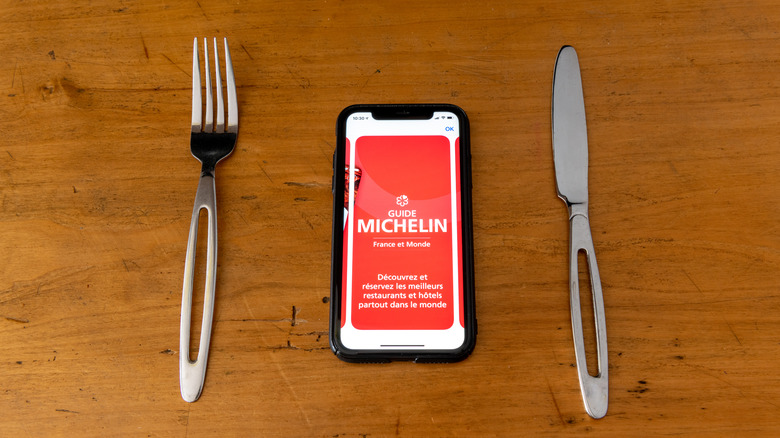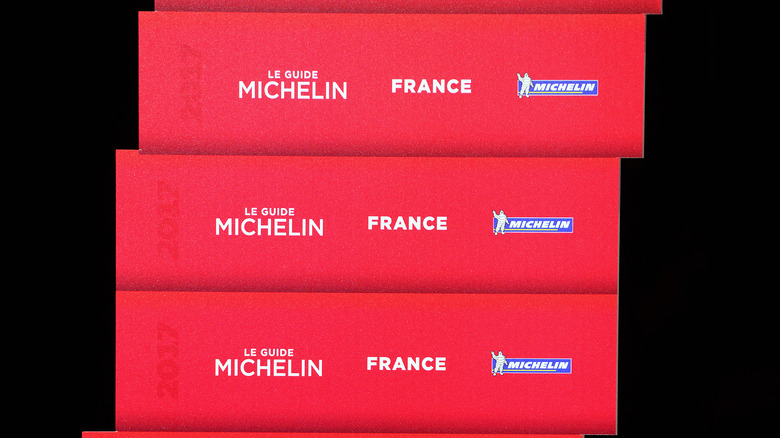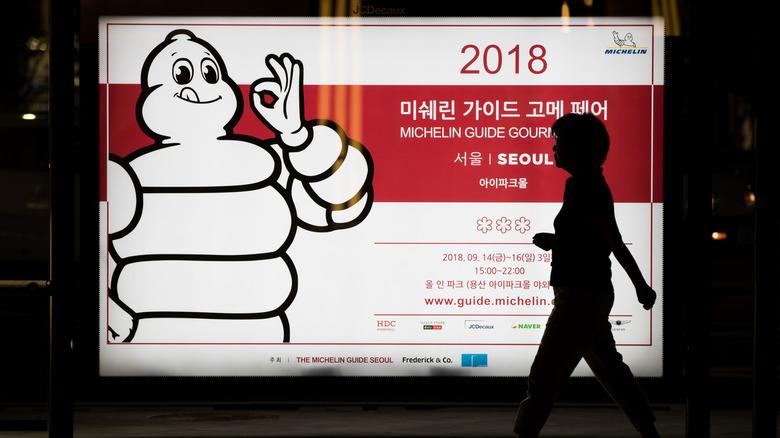The Reason Chef Eo Yun-Gwon Sued The Michelin Guide
South Korean chef Eo Yun-gwon, who trained in Milan for seven years, runs the Italian contemporary Ristorante Eo in Seoul, which features food inspired by northern Italy's Liguria region (via 10Mag). The menu changes daily based on the ingredients available, explains Visit Seoul, with some airlifted to the restaurant to ensure they are at peak freshness, according to Ristorante Eo's website. However, the exacting chef made headlines worldwide not for his food, but for his decision to sue the prestigious Michelin Guide (via CNN).
Ristorante Eo's bona fides are like catnip to a guide like Michelin, which carries considerable culinary influence and its star ratings a goal of ambitious chefs, according to Grub Street. However, when the guide expanded into South Korea in 2016, it garnered controversy with its first publication. The Washington Post reports that when the premier guide was published, it was riddled with errors, prompting one politician to cry foul because the government had paid for Seoul to get its own Michelin Guide, outing a once-secret practice of commissioning a guide to boost tourism.
What is the Michelin Guide
The Institute of Culinary Education explains the Paris-based Michelin Guide, which is indeed a spin off from the famous tire brand, was created in 1900 to encourage drivers to take road trips by giving them a directory to local attractions. It was a marketing tool to promote tires and additional driving to put wear and tear on them. By the 1920s, the guide was so popular, Michelin began charging for it. Restaurant reviews appeared in 1926 and a ratings system – between one and three stars — was developed, according to Escoffier. Insider explains that Michelin dispatches culinary pros — all of whom are trained specifically to review for the guide — to secretly dine at chosen establishments. They don't take notes and often return several times over the course of many months before weighing in.
The criteria for their stars — or even being included in the guide at all — is shrouded in mystery, which has created a cloud of controversy over the years. Former Michelin inspector Pascal Remy launched a culinary-world scandal when he went public with allegations about there being only five inspectors to review over 1,000 restaurants in France, that starred restaurants are not reviewed on an annual basis, and that reviewers were instructed to retain the three-star status of Michelin's sacred cows (via the LA Times).
Regardless of the controversy, a Michelin star is still coveted by most chefs and restauranteurs. However, a star from the guide is not necessarily the road to easy street. Some Michelin-anointed restaurants gave up their star because the expense was too high (via New York Times).
Eo Yun-gwon sued the Michelin Guide for this offence
Regardless of the prestige, Chef Eo is not a fan. He's worked to get his restaurant removed from the guide since it first appeared in 2017 with a one star rating (via Food and Wine). The star remained in 2018, but the restaurant was demoted, receiving only a "Plate" (still considered a level of distinction) in 2019 and 2020. Lest it sound like sour grapes, Eo offered the publication proof in social media posts that he's implored guide to remove his restaurant since it first arrived.
The chef, critical of the guide's opaque practices, became fed up with their unresponsiveness and decided to file suit rather than be subject to what Eo calls "forcibly listing [restaurants] against their will and without a clear criteria," so he took his appeal to the courts, suing the Michelin Guide for public insult, similar to libel and slander charges in the U.S. (via CNN). Eo told the news outlet, "Michelin guide is a cruel system. It's the cruelest test in the world. It forces the chefs to work around a year waiting for a test [and] they don't know when it's coming," adding that Michelin "is blinded by money and lacks philosophy."


